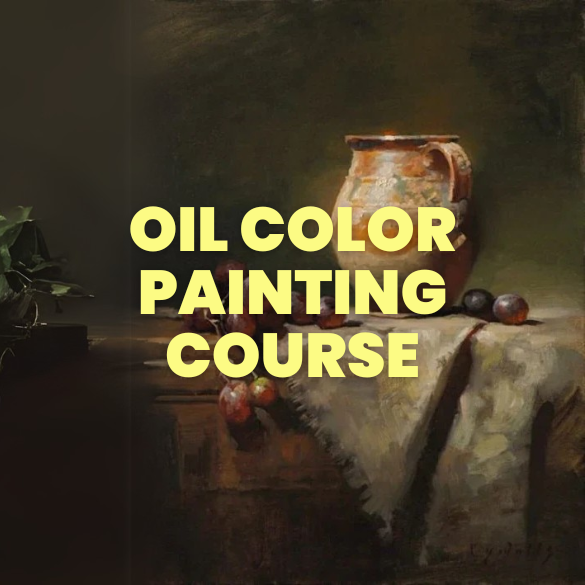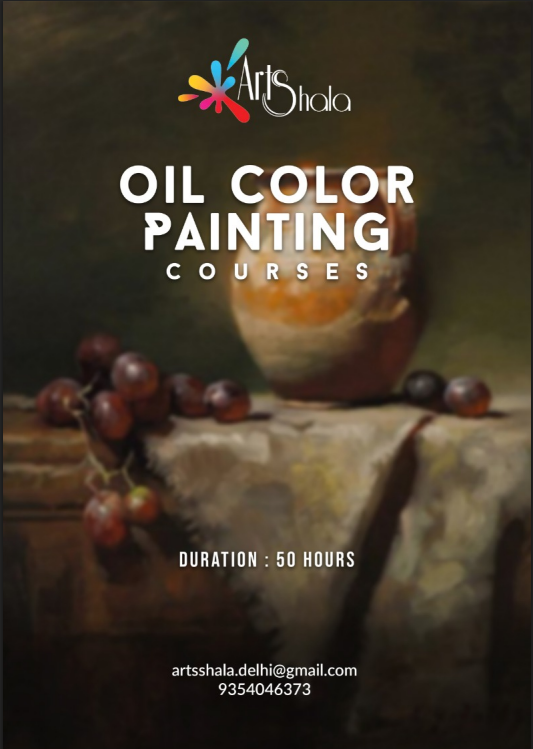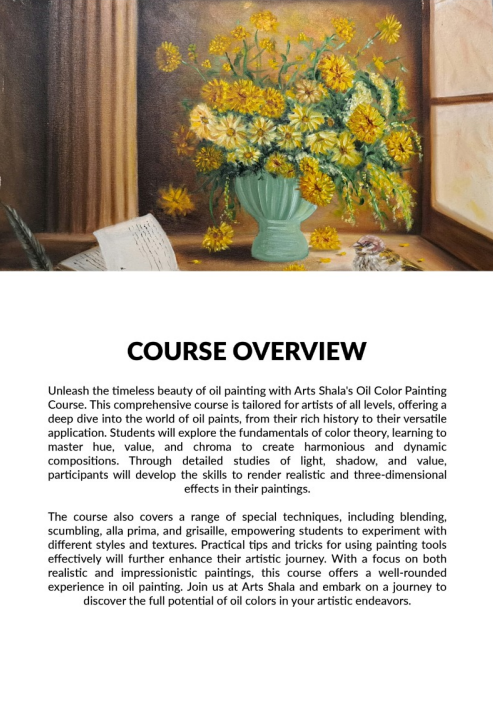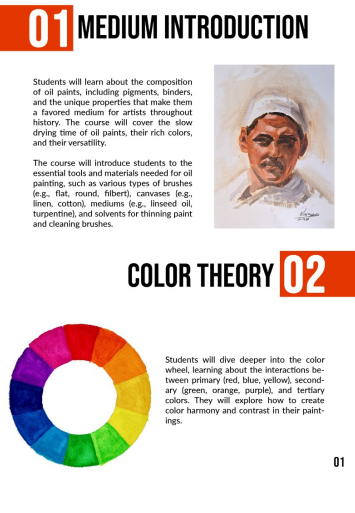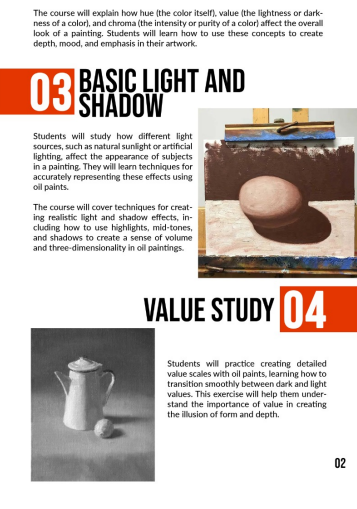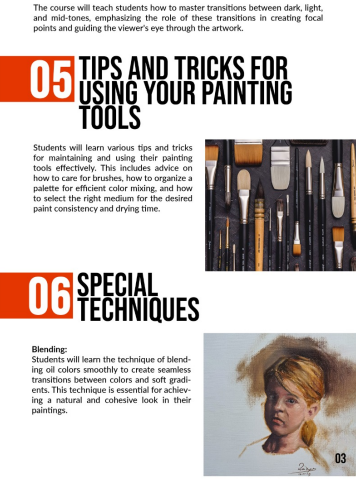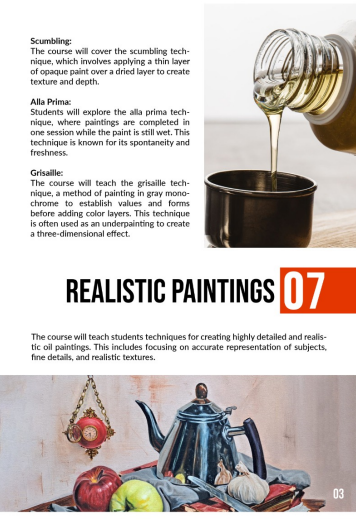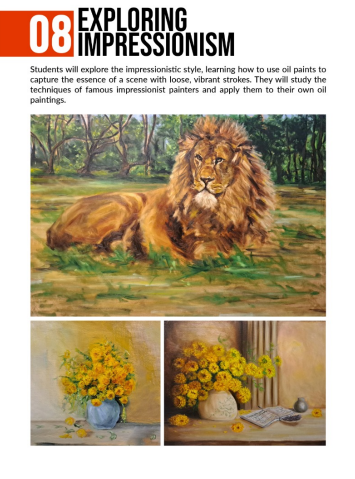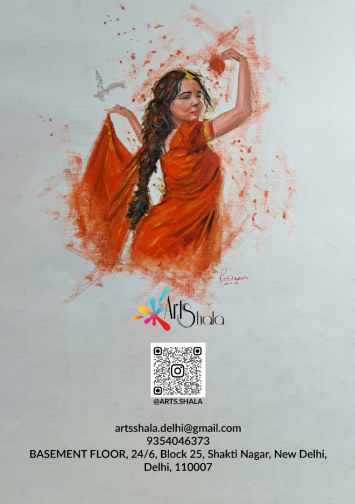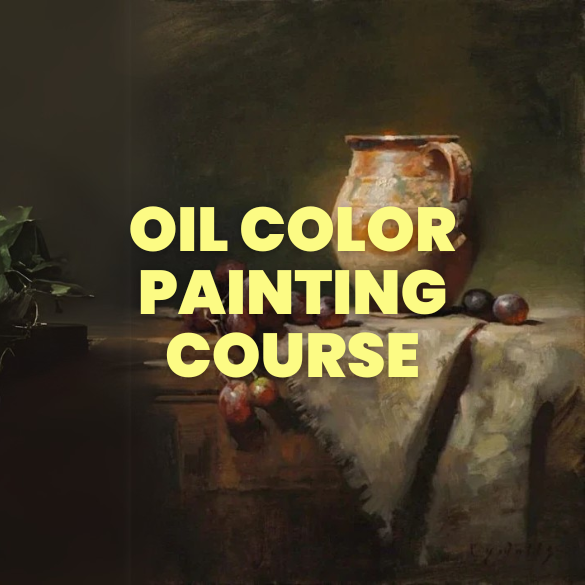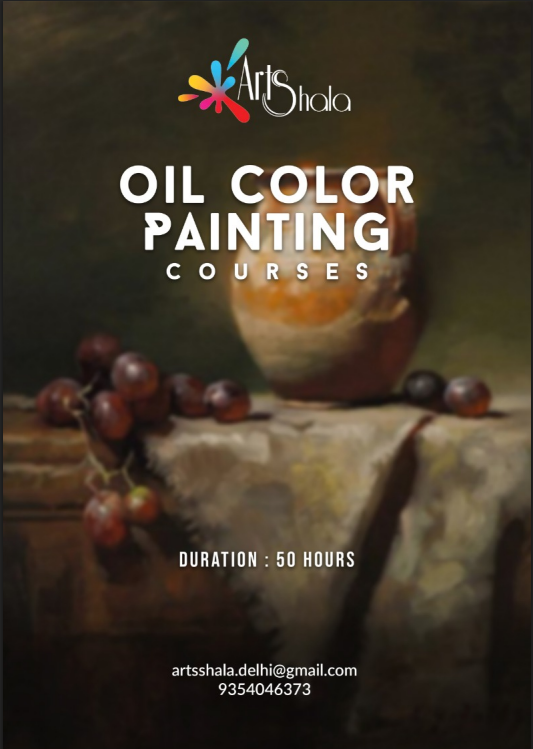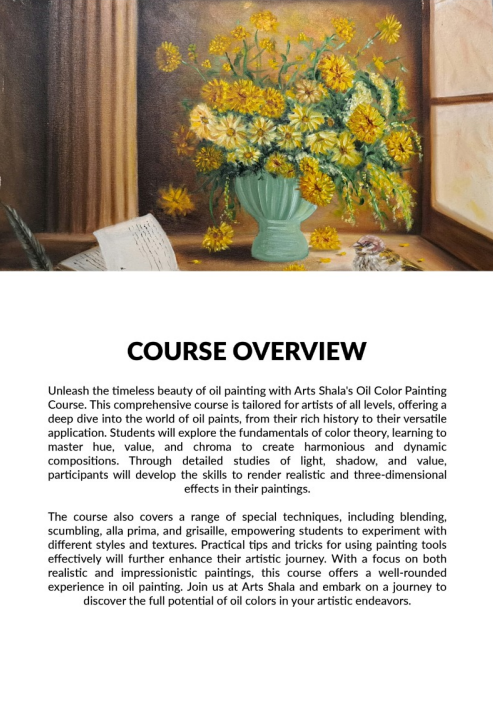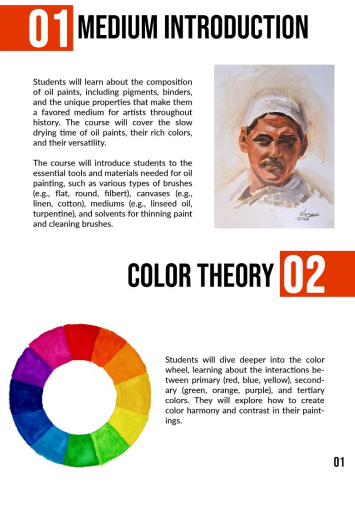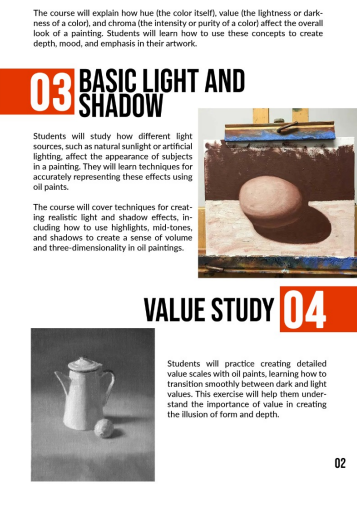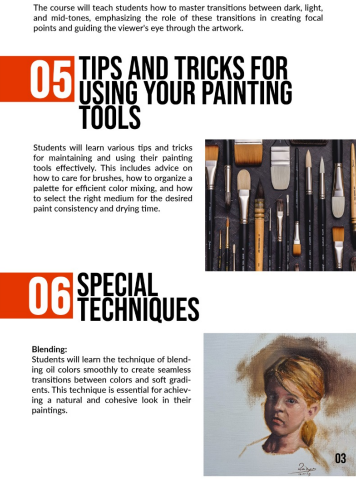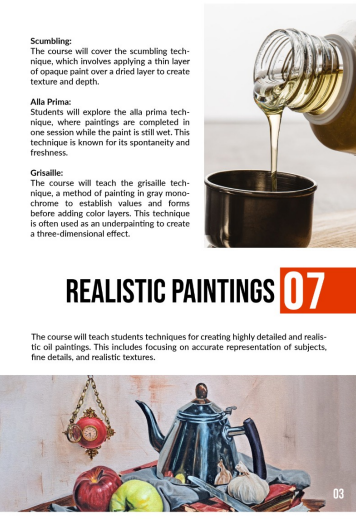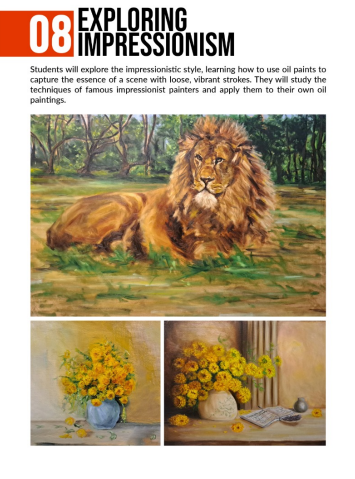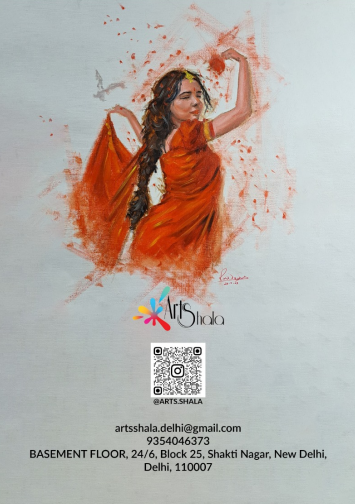Unleash the timeless beauty of oil painting with Arts Shala's Oil Color Painting Course. This comprehensive course is tailored for artists of all levels, offering a deep dive into the world of oil paints, from their rich history to their versatile application. Students will explore the fundamentals of color theory, learning to master hue, value, and chroma to create harmonious and dynamic compositions. Through detailed studies of light, shadow, and value, participants will develop the skills to render realistic and three-dimensional effects in their paintings.
The course also covers a range of special techniques, including blending, scumbling, alla prima, and grisaille, empowering students to experiment with different styles and textures. Practical tips and tricks for using painting tools effectively will further enhance their artistic journey. With a focus on both realistic and impressionistic paintings, this course offers a well-rounded experience in oil painting. Join us at Arts Shala and embark on a journey to discover the full potential of oil colors in your artistic endeavors.
What the Course Includes:
Medium Introduction
Students will learn about the composition of oil paints, including pigments, binders, and the unique properties that make them a favored medium for artists throughout history. The course will cover the slow drying time of oil paints, their rich colors, and their versatility.
The course will introduce students to the essential tools and materials needed for oil painting, such as various types of brushes (e.g., flat, round, filbert), canvases (e.g., linen, cotton), mediums (e.g., linseed oil, turpentine), and solvents for thinning paint and cleaning brushes.
Color Theory
Students will dive deeper into the color wheel, learning about the interactions between primary (red, blue, yellow), secondary (green, orange, purple), and tertiary colors. They will explore how to create color harmony and contrast in their paintings.
The course will explain how hue (the color itself), value (the lightness or darkness of a color), and chroma (the intensity or purity of a color) affect the overall look of a painting. Students will learn how to use these concepts to create depth, mood, and emphasis in their artwork.
Basic Light and Shadow
Students will study how different light sources, such as natural sunlight or artificial lighting, affect the appearance of subjects in a painting. They will learn techniques for accurately representing these effects using oil paints.
The course will cover techniques for creating realistic light and shadow effects, including how to use highlights, mid-tones, and shadows to create a sense of volume and three-dimensionality in oil paintings.
Value Study
Students will practice creating detailed value scales with oil paints, learning how to transition smoothly between dark and light values. This exercise will help them understand the importance of value in creating the illusion of form and depth.
The course will teach students how to master transitions between dark, light, and mid-tones, emphasizing the role of these transitions in creating focal points and guiding the viewer's eye through the artwork.
Tips and Tricks for Using Your Painting Tools:
Students will learn various tips and tricks for maintaining and using their painting tools effectively. This includes advice on how to care for brushes, how to organize a palette for efficient color mixing, and how to select the right medium for the desired paint consistency and drying time.
Special Techniques
Blending: Students will learn the technique of blending oil colors smoothly to create seamless transitions between colors and soft gradients. This technique is essential for achieving a natural and cohesive look in their paintings.
Scumbling: The course will cover the scumbling technique, which involves applying a thin layer of opaque paint over a dried layer to create texture and depth.
Alla Prima: Students will explore the alla prima technique, where paintings are completed in one session while the paint is still wet. This technique is known for its spontaneity and freshness.
Grisaille: The course will teach the grisaille technique, a method of painting in gray monochrome to establish values and forms before adding color layers. This technique is often used as an underpainting to create a three-dimensional effect.
Realistic Paintings
The course will teach students techniques for creating highly detailed and realistic oil paintings. This includes focusing on accurate representation of subjects, fine details, and realistic textures.
Exploring Impressionism
Students will explore the impressionistic style, learning how to use oil paints to capture the essence of a scene with loose, vibrant strokes. They will study the techniques of famous impressionist painters and apply them to their own oil paintings.


